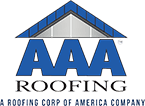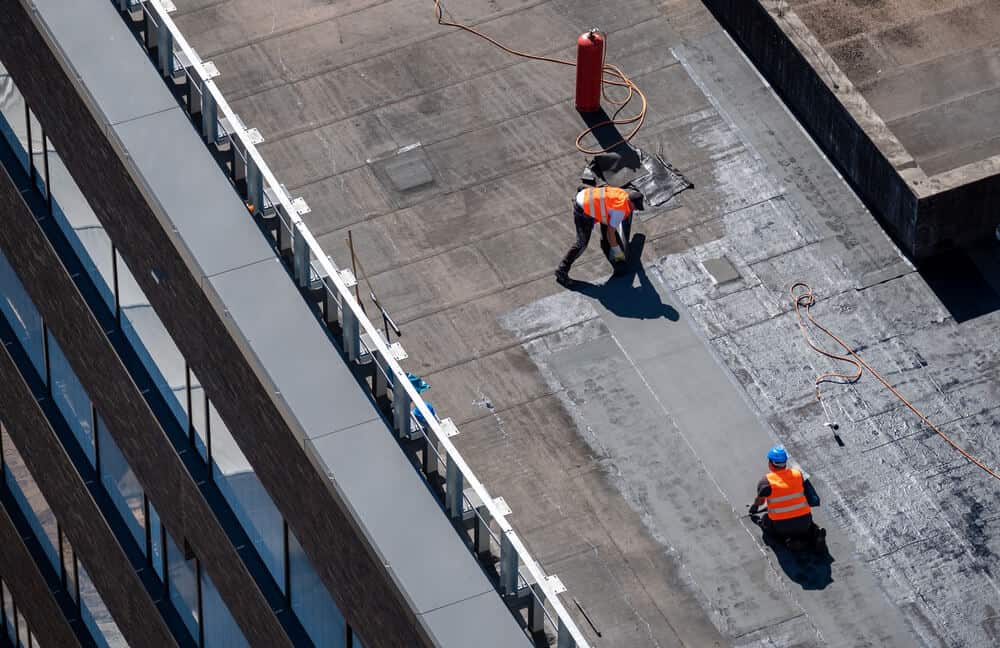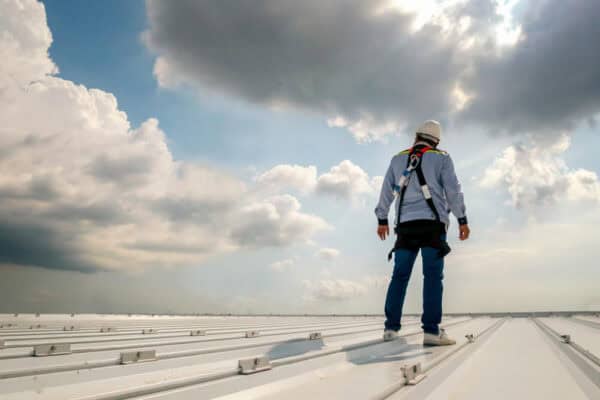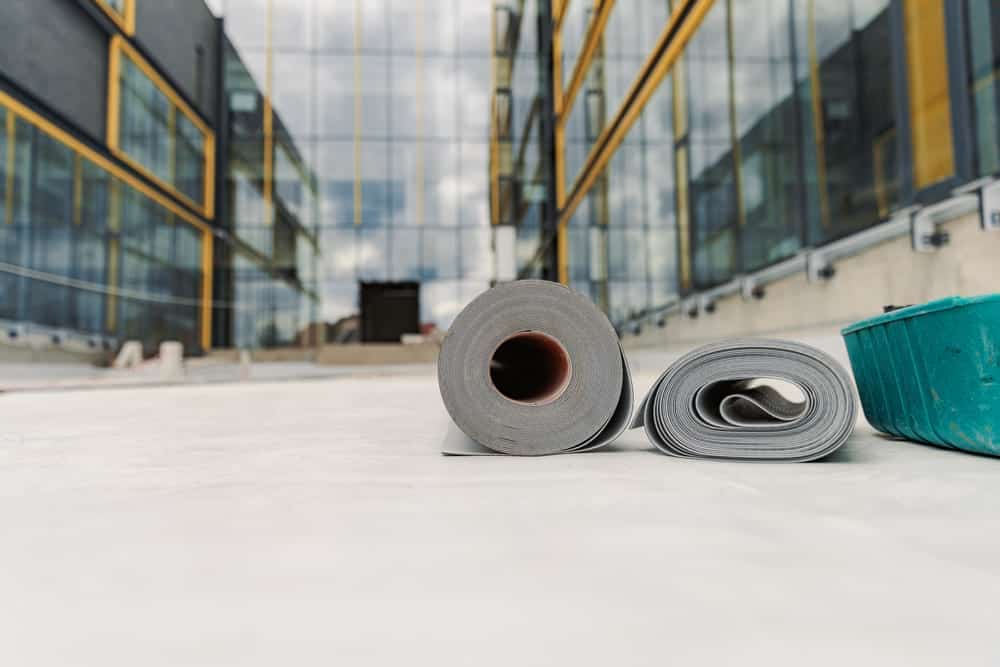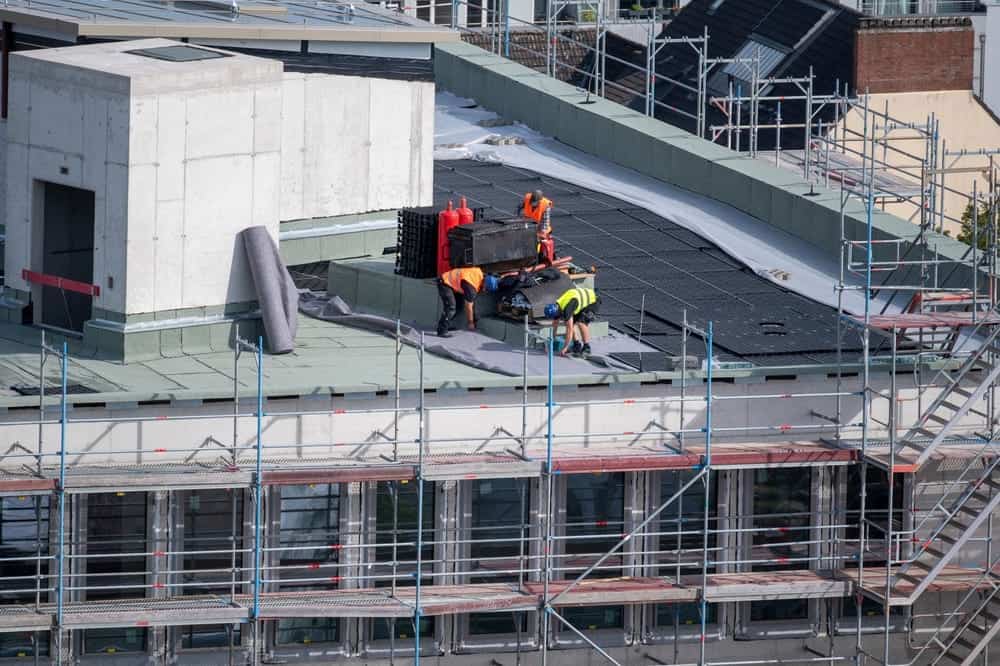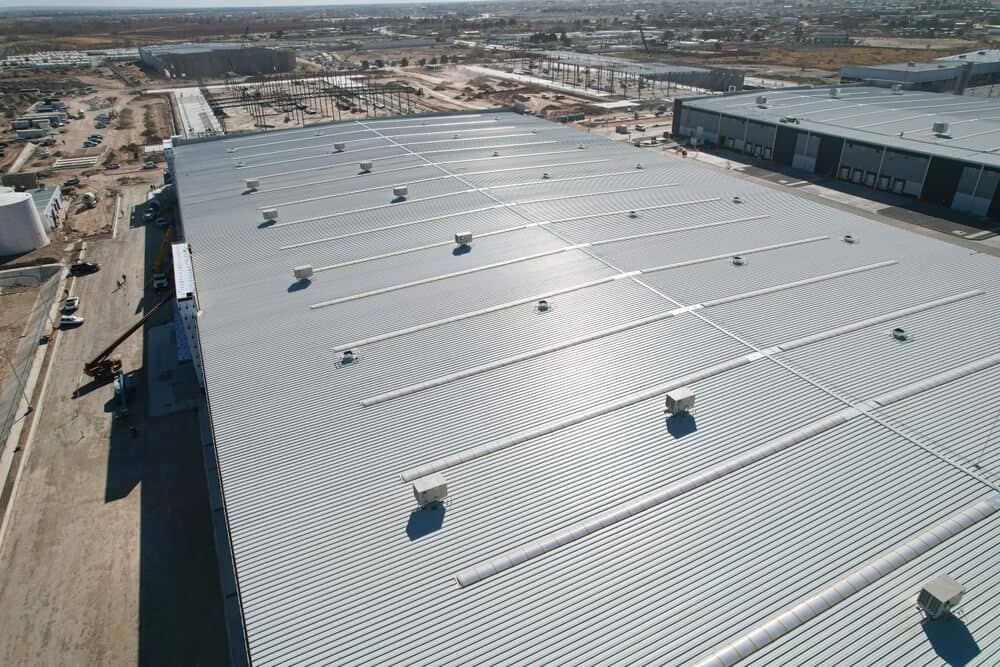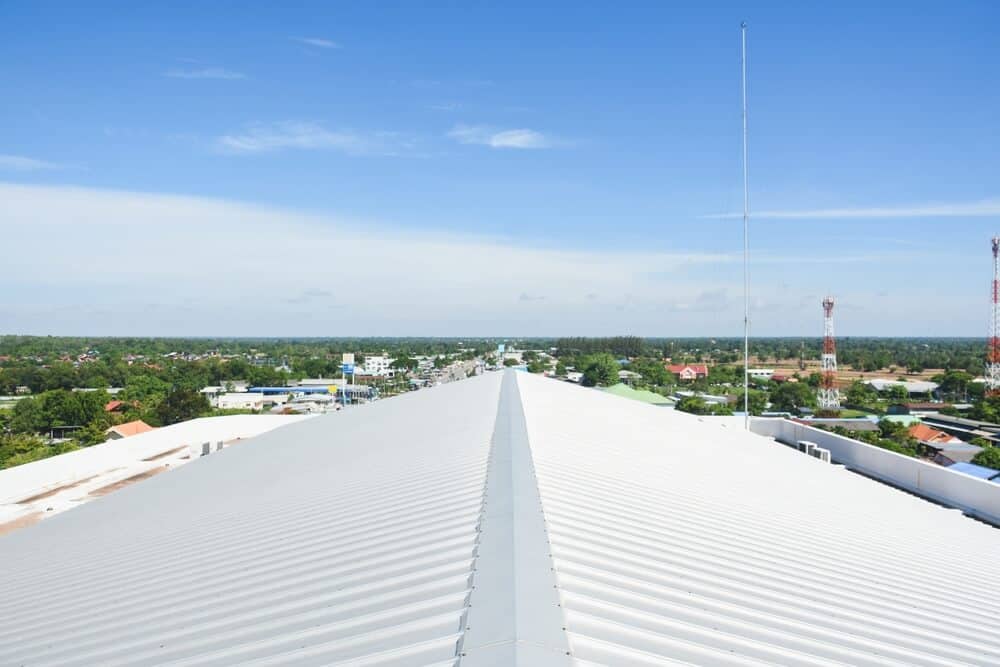A commercial roofing project is not something a property owner wants to take on more often than necessary. Not only should the commercial building owner want to get as much value out of their current roof as possible, but they also should avoid the potential disruption that a roofing installation can cause.
This guide aims to help property owners extend the lifespan of their roof for as long as possible. Whether it’s about trying to get a few more years out of an existing roof or trying to take care of a brand new commercial roofing system, you’ll know what it takes by the end of this guide.
Contents
Commercial Roof Types and Lifespan
Though styles and architectural touches may vary, commercial buildings typically have one of two basic roof types. Each roof type has its own expected lifespan, so it’s important to recognize what you have in order to have reasonable expectations for your investment.
Flat Roofs vs. Sloped Roofs
The two basic roof types are flat roofs (also called low-slope roofs) and sloped roofs. Flat roofs are very common on large buildings because they’re practical and more affordable than sloped roofs, which requires expensive framing and materials costs. Sloped roofs are great on smaller buildings, as they shed rain and snow effectively, but they’re not as practical.
Flat roofs are cost-effective, but since they’re made from waterproof roof membranes, they’re prone to ponding and collecting debris, making shedding water more difficult. Depending on the material, you can expect low slope roofing systems to last 15 to 30 years. Special care needs to be taken to avoid ponding and years.
On the other hand, sloped commercial roofs can last 15 to 60 years, depending on whether the property owner chooses basic asphalt or metal roofing, with the latter of the two lasting longer. Sloped roofs have lower maintenance requirements, as well, making it easier to extend their lifespans.
Other Factors Affecting Commercial Roof Lifespan
There is more to determining a roof’s potential lifespan than just the type of roof. The following factors all have a role to play, especially in California, where weather conditions, terrain, and environments can vary so much across the state.
Weather Conditions in California
All of the different weather conditions across the state have an impact on the lifespan of a commercial roof. For example, sunny southern California roofs face constant UV rays, which can wear down some materials prematurely, limiting their lifespan. Rainy, cloudy conditions often result in ponding and leaks. Areas prone to high winds require ballasted roofing material, while those exposed to heavy snowfall might require specially designed systems to help shed the weight.
Quality of Roofing Material
Like most products, roofing materials come in varying degrees of quality. For example, some single-ply roofing materials like EPDM and TPO come in varying thicknesses and quality. In fact, this has been a significant factor with TPO roofs, which is why this material requires an expert installer. Metal roofs also come in different gauges and materials, with thinner roofs often lasting for just up to 20 years.
Use and Foot Traffic
Flat roofs often have mechanical equipment like air handlers and chillers installed on top, and these items require maintenance. As mechanics service the equipment, they’re walking on roofing systems, placing their tools down, and even setting up ladders and other items required to do their jobs.
All of these activities can reduce the lifespan of a roofing system:
- Boots can wear down the material and seams.
- Tools and ladders can poke holes.
- Accidental drops can cause tears.
In these cases, this type of traffic requires specific material types, additional layers, and other precautions to prevent potential issues.
Extending the Lifespan of Your Commercial Roof
All of these factors aside, let’s get down to what we’re all here for: how to extend the lifespan of a commercial roofing system. The following tips and strategies will help project owners get as much usable life out of their roofs as possible. It does require being committed to caring for the roof, but the additional years of service will make it worth it.
Importance of Proper Installation
Extending the lifespan of a commercial roof starts with the installation process. Improperly installed roofing systems won’t resist wind, rain, or UV rays well, resulting in lifting, tears, or degradation. Behind every roof reaching the maximum lifespan is a team of seasoned, experienced installers.
Property owners aren’t responsible for installing their systems, but they are the ones who choose their installers. Hiring a reputable company to install their new commercial roof is vital. A company with a proven track record of successful installations helps ensure the structural integrity of the building and will prevent leaks while holding up to harsh weather conditions.
Scheduling Regular Inspections
If you want to extend the lifespan of your commercial roof, you have to know what’s going on up there. Regular inspections are important to ensure any issues and degradation are found before they can do extensive damage to the rest of the commercial roof system and the building.
And, it doesn’t matter if the roofing system is “low maintenance,” it still requires regular inspections. Inspecting the roof at least twice a year will help catch any problems before they become major repairs or require a roofing replacement.
Regular Maintenance for Extended Lifespan
One of the most important factors in extending the lifespan of a commercial roof is performing basic preventive maintenance. Whether it’s an on-site crew or a professional roofing service’s maintenance program, proper maintenance will help the roof meet its maximum service window, which is typically around 30 to 40 years.
Regular preventive maintenance includes cleaning the roofing surface, ensuring that drains, scuppers, and gutters are clear, sealing or coating the roof when necessary, patching or repairing any small issues, resealing flashing, and making sure the roof is clear of debris.
It’s also important to note that regular preventive maintenance is a manufacturer’s warranty requirement. Manufacturers can deny expensive claims if the roof isn’t maintained regularly and records of preventive maintenance aren’t up to date.
Addressing Issues Before They Become Major Problems
Inspections and maintenance are the baseline and aim to prevent any issues from developing, but they’re not foolproof. Issues can develop, and when they do, it’s important to take care of them right away before they result in costly repairs.
For example, if a roof starts to leak in a storm, it’s important to get a crew out to look at it right away. The more rain the roof sees, the more damage will be done to the building, even if it doesn’t result in a noticeable leak below the ceiling deck again.
Similarly, be sure to patch any small punctures or tears when they happen, if at all possible. Otherwise, the hole may get larger and result in serious damage. For larger tears, it’s important to call in an experienced crew. A large tear, seam split, or other damage doesn’t necessarily mean the roof needs to be replaced, but it will require expert repair.
Train Your Staff
Another tool that many property owners don’t consider is training their staff to recognize roofing issues. Maintenance crews don’t always know what potential damage looks like or how it happens. Regular training to refresh their knowledge and discuss maintenance initiatives is key.
Don’t overlook the safety aspect, as well. Having teams of maintenance personnel walking on the roof looking for leaks or damage is inherently dangerous. Be sure to train them on the property safety procedures to prevent accidents, injuries, or deaths during inspections and repairs.
Let Us Help You Get the Most from Your California Commercial Roof
At AAA Roofing, we understand what it takes to extend the lifespan of your commercial roof as much as possible without putting your building at risk. We have more than 35 years of experience helping companies protect their buildings, keeping their day-to-day operations running. Whether you’re looking for a single-ply roofing system like EPDM or TPO, or you want to take the jump into commercial metal roofing systems, we have the knowledge and experience it takes to protect your building for decades to come.
